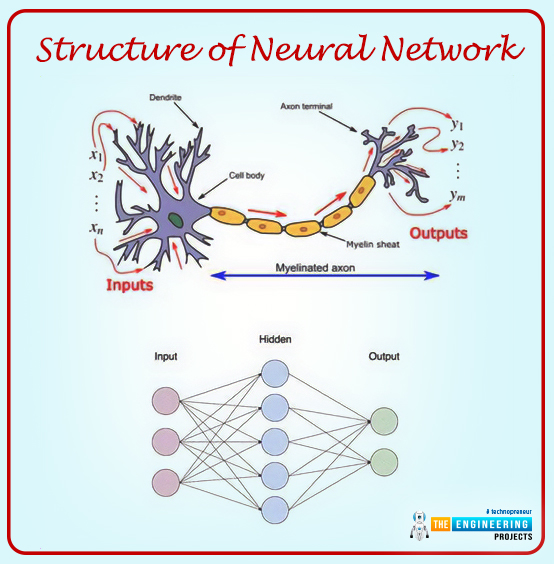
Hello Learners! Welcome to the next lecture on deep learning. We have read the detailed introduction to deep learning and are moving forward with the introduction of the neural network. I am excited to tell you about the neural network because of the interesting and fantastic applications of neural networks in real life. Here are the topics of today that will be covered in this lecture:
What do we mean by the neural network?
How can we know about the structure of the neural network?
What are the basic types of neural networks?
What are some applications of these networks?
Give an example of a case where we are implementing neural networks.
Artificial intelligence has numerous features that make it special and magical in different ways, and we will be exploring many of them in different ways in this course. So, first of all, let us start with the introduction.
Neural Network
Have you ever observed that your favorite videos are shown to you on Facebook or other social media platforms? Or does the advertisement for the product you are searching for pop up when using the phone applications? All of these are because of the artificial intelligence of the system that is running in the backend of the app and we have discussed it many times before.
To understand well about the neural network, let us discuss the inspiration and the model that has resulted in the formation of the neural network. We all have the idea of the neural network of the human brain. We are the best creation because of the complex and the best brain that calculates, estimate, and predict the results of the repeating processes in a better way. The same is the case with the neural network of computer systems. We have discussed the basic structure of the neural network many times but now, it's time to know about the structure of the neural network.
Structure of Neural Network
I always wonder how the answering software and apps such as Siri reply to us accurately and without any delay. The answer to this question was found in the workings and architecture of the network working behind this beautiful voice. I do not want to start the biology class here, but for proper understanding, I have to discuss the process when we hear a voice and understand it through the brain.

When we hear a sound in the surroundings, it is first caught by the ear, and this raw audio is acting as an input for the nerve of the ear. These nerves then pass this signal to the next layers that in return, pass these signals further to the next layers.
The layer makes the result more refined and accurate. Finally, the last layer reaches the brain where the brain makes the decision to respond. The same process is used in the neural network. This statement will be clear to you how it works, but for that, you have to know about the seven types of neural networks.
Feed Forward Neural Network
Recurrent Neural Network
Radial Basis Function (RBF) Neural Network
Convolution Neural Network
Modular Neural Network
Kohonen Self-organizing Neural Network
Multi-Layer Perception
Feed Forward Neural Network
Let me start with the very basic type of neural network so that you may understand it slowly and gradually. The workings of this network are related to its name. The motion of the information or the nerves is unidirectional, and the process is ended in the output. In this type, there is no way to move a neural nerve backwards and train the previous layer. The basic application of this type of network is found in face recognition and related projects, people who are interested in the applications such as speech recognition prefer to choose this type of network to avoid the complexity.

Radial Basis Function (RBF) Neural Network
This layer includes the radial function. The working of this function will be clearer when you know about the structure of this layer. Usually, this network has two layers:
Hidden Layer
Output Layer
The radial function is present in the hidden layer. The function is proved helpful in reasonable interpolation during the process in which the data is fitted into the layers. The layer works by measuring the distance of the nerve from the distance of the central part of the network. For the best implementation, this network checks for all types of data points and groups similar data points. In this way, this type of network can be used to make the systems such as power restoration.
Recurrent Neural Network
As you can guess from the name of this network, it has the ability to recur. It is my favourite type of neural network because it learns from the previous layer, and the data is used to predict the output in a precise way. This is one of the main layers, and its work has been discussed many times in this tutorial.
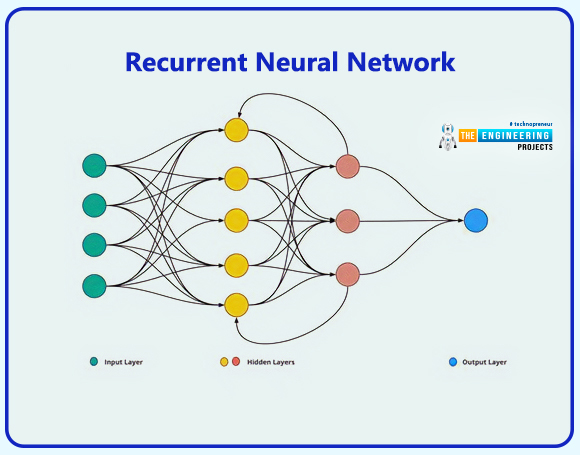
Contrary to the first type of neural network that we have discussed before, the information can be recurred or moved to the previous layer. Here are some important points about this layer:
The first layer is a simple feed-forward layer. In other words, it can not move to the previous layer.
Each layer transmits the data to the next layer unidirectional in the first phase.
If during the transmission of data, the layer is predicting inaccurate results then it is the responsibility of the network to learn by repeating the saving of data.
The main building block of this network is the process of saving the data into the memory and then working automatically to get accurate results.
It is widely used in the text to speech conversations.
Convolution Neural Network
Now coming towards an important type of neural network that has a scope worldwide and engineers are working day and night in this field because of the interesting and beneficial applications of this network. Before going deep into the definition of this network, I must clarify what exactly a convolution is. It is the process of filtering the results in a way that can be used to enable activation. The filtering mechanism is repeating and therefore, it yields the perfect results all the time. Usually, it is used in image processing, natural language processing, and similar tasks because it breaks the image into parts and then represents the results according to the choice of the user. It is one of the classical techniques that are used for different purposes when people are working on images, videos, or other related projects. For example, if you want to find the edges or details of the images to replace or edit them in a better way, then this technique will be helpful all the time because, through it, you can play with the images and the components of the images as we are using the pixels for our purpose. If these things seem difficult or complex to you at the moment, do not worry, because all the things will be cleared with the passage of time.
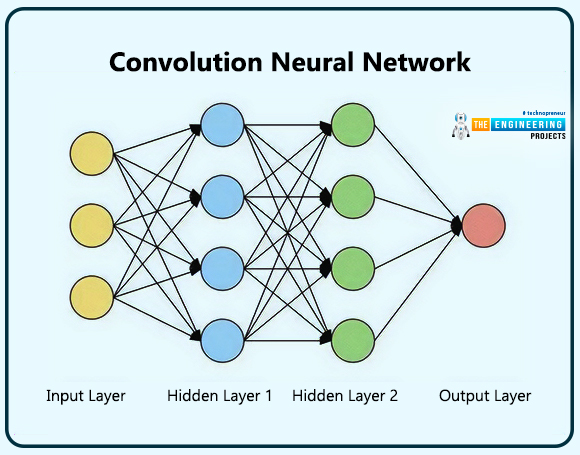
Modular Neural Network
Modularity is considered the basic building block of the neural network. It is the process of dividing complex tasks into different modules or parts and solving them individually so that in the end, the results may be combined together and, finally, we get the accurate ending. It is a faster way of working. You can understand well by considering the example of the human brain, which is divided into the left and right sides and, therefore, can work simultaneously. There are different tasks that are assigned to each part and they work best in their duties.
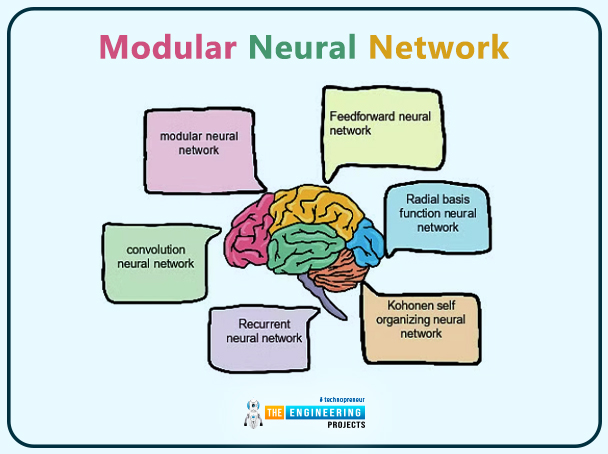
Kohonen Self-organizing Neural Network
Random input vectors are fed into a discrete map of neurons. Dimensions and planes are other names for vectors. Its applications include recognizing patterns in data, such as in medical analysis.
Multi-Layer Perception
Here, I am now discussing the type of network that has more than one hidden layer. It is a little bit complex, but if you have an idea of the cases discussed before, you will easily understand this one. The purpose of using this network is to provide the type of data that is not linearly separable. There are several functions that can be used while working on this network. The interesting thing about this network is, it consists of a non-linear activation function for work.
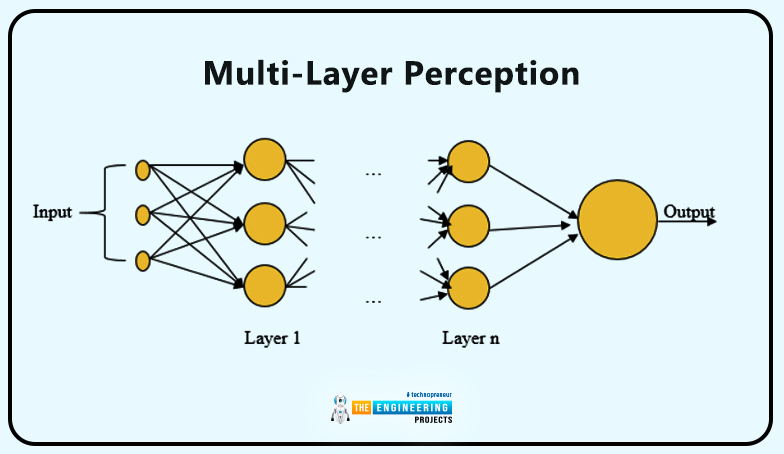
Here n is the number of the last layer, which can be from 0 to any number according to the complexity of the network. A more useful network contains more layers and in return, is more useful usually.
Example of Recurrent Neural Network
At the moment, I want to discuss an example of this network because it has a slightly different type of work, and I hope that with the help of this example, you will get the concept of what I am trying to teach you, Consider the case where we want to talk to the personal assistance in our divide and on the practical implementation, it is a simple task of few seconds yet at the backend, there is a long procedure that is being followed so that you may get the required results. Here is a simple sentence that is to be asked of the personal assistant.
The first step of the network is to divide the whole sentence into words so that these can be scanned easily.
We all know that each word has a specific pattern of sound, and therefore, the word is then sampled into the discrete sound waves. Let me revise that "discrete sound signals are the ones that consists of discontinuous points. We get the results in the following form.
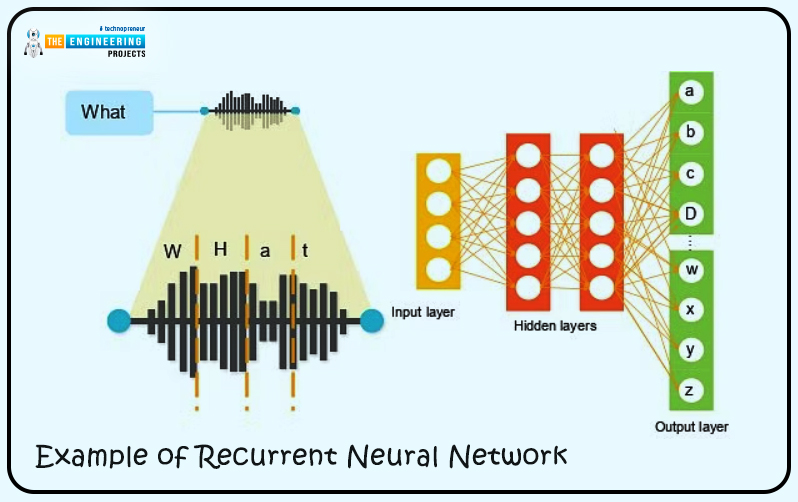
Now, it is the time when the system further divides the single word into a single alphabet. As you can see in the image given above, each alphabet has a specific amplitude. In this way, the values of different alphabets are obtained and this data is then stored in the array.
In the next step, the whole data obtained is then fed into the input layer of the network and here the working of recurrent neural network stars. By passing through the input layer, each weight of the alphabet is assigned to the interconnection between the input layer and the hidden layer of the network. At this moment, we need a transfer function that is calculated with the help of the following formula:

In the hidden layers, the weights get assigned to the hidden layers. This process continues for all types of layers, and as we know, the output of the first layer is used as the input by the second layer, and this process continues until the last layer. But keep in mind, this process is only for the hidden layers.
While using speech recognition with the help of the neural network, we use different types of terms, and some of them are :
Acoustic model
Lexicon
By the same token, there are different types of exits. I am not going to explain these terms right now because it is unnecessary to discuss them at the moment.
In the end, we are reaching the conclusion that neural networks are amazing to learn and interesting to understand while working with deep learning. You will get all the necessary information about these networks in this course. We started with the basic introduction of the neural network and saw the structure of the network in detail. Moreover, we found the types of neural networks in detail and all the basic networks are discussed here so that you may compare well why we are using these networks and what type of network will be best for you for learning and training. We suggest feed-forward neural networks for basic use, and you will see the reason behind this suggestion in our coming lecture. Till then, you have to search for other networks; if you find any, discuss them with us. In the next lecture, you will learn about deep learning and neural networks, so stay tuned with us.



